Create
Vintage St. Pete: Celebrity dinner theater
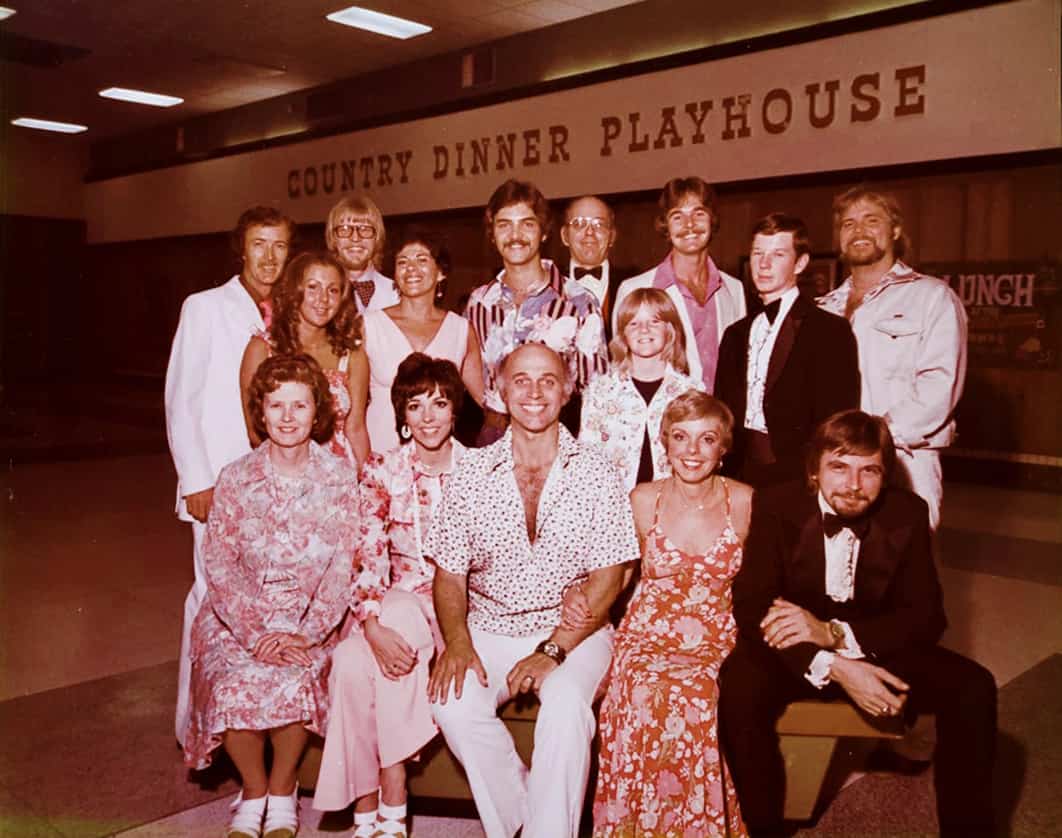
The old joke went like this: Movie stars never die, they just fade away. But first, they do dinner theater.
From the early ‘70s through the mid ‘80s, dinner theater was one of the most popular forms of entertainment in the country. For less than $20, folks in middle America could chow down on a three-course buffet, then stay in their seats and enjoy a play – usually a lighthearted comedy – live onstage, with a one-time Hollywood or TV star in the lead role.
St. Petersburg had two prosperous dinner theaters that featured celebrity headliners. The Showboat, on Ulmerton Road, arrived in 1967, followed soon after by the Country Dinner Playhouse, in Gateway Mall.
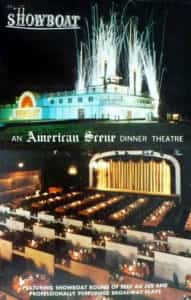 Tampa businessman Dow Sherwood, who owned the Village Inn pancake house franchise, designed his dinner theater to resemble a 19th century Mississippi paddlewheel (not unlike the one in the musical Showboat).
Tampa businessman Dow Sherwood, who owned the Village Inn pancake house franchise, designed his dinner theater to resemble a 19th century Mississippi paddlewheel (not unlike the one in the musical Showboat).
Neither Sherwood nor business broker Al Tong, who took over management of the failing Country Dinner Playhouse in 1974, had any experience in theater, or show business. Nevertheless, they made tremendous successes out of their ventures by hiring – and trusting – backstage people who knew what they were doing.
Sherwood, the restaurateur, made a point of sampling each night’s buffet before the doors opened. “If the food is bad,” he’d say, “the show is gonna be bad. I don’t care if it’s Richard Burton.”
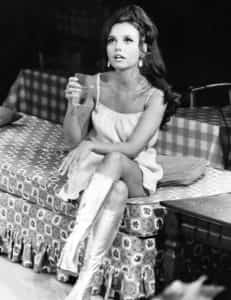
Dawn Wells, “The Owl and the Pussycat,” 1969
Burton, sadly, never trod the Showboat boards. Dawn Wells, who’d played Mary Ann on Gilligan’s Island, was the first “name” to grace Sherwood’s stage, starring in the sexy comedy The Owl and the Pussycat in 1969. Throughout the ‘70s and well into the decade that followed, Wells made a half dozen appearances at both the Showboat and the Country Dinner Playhouse, making her something of a Tampa Bay MVP.
Film stars including Myrna Loy, Don Ameche, Mickey Rooney, Cyd Charisse, Dorothy Lamour, Van Johnson, Joseph Cotten, Maureen O’Sullivan, Cesar Romero, Pat O’Brien, Martha Raye, Dana Andrews and June Allyson worked the “beef and board” trade in St. Pete. From television, the roster included Bob Denver, Broderick Crawford, Tony Dow and Jerry Mathers, Bob Crane, Gary Burghoff, Bill Daily, Larry Linville, Don Adams, Ray Walston, Ann B. Davis, Robert Reed, Mike Connors, Chuck Connors …
Not exactly A-listers, but enough “star power” to bring out the locals for “dinner and a show,” as the evenings were packaged.
 Recalls actor/singer Jimmy Ferraro, who worked both venues for many years: “Men had to have a jacket. If you didn’t have a jacket, there was a rack of all different sizes. They would fit you before you went in. Women would wear gowns. Everybody was dressed to the nines.
Recalls actor/singer Jimmy Ferraro, who worked both venues for many years: “Men had to have a jacket. If you didn’t have a jacket, there was a rack of all different sizes. They would fit you before you went in. Women would wear gowns. Everybody was dressed to the nines.
“My mother would put on a gown and rhinestones, a mink stole and white opera gloves, and she’d be ready to go to the Showboat.”
As part of a group of Tampa Bay performers who belonged to Actors’ Equity, the professional union, Ferraro was a go-to for supporting roles – behind the stars – and later on, when high-octane, star-less musicals became all the rage.

Tony Dow and Jerry Mathers, “Boeing Boeing,” 1978.
“Both places were very professionally run,” he says. “With Country Dinner Playhouse, there was always that country atmosphere, even with the décor of the theater itself – lots of wood. It was a bit more casual. But still, people dressed for a night at the theater. That was the thing to do.”
Michael O. Smith went on to Broadway, and television, but he cut his thespian teeth in the St. Pete dinner theaters.
His memories of working with the visiting stars are mostly warm and fuzzy.
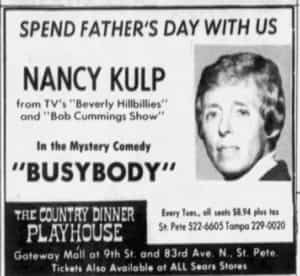 “There were times when people were exceedingly nice, and generous,” Smith says. “Kaye Ballard comes to mind. She became part of the family. Kathryn Grayson told me that she and Ava Gardner were two of the only actresses in Hollywood who never had their teeth capped, because they’d grown up in North Carolina where the water had fluoride.
“There were times when people were exceedingly nice, and generous,” Smith says. “Kaye Ballard comes to mind. She became part of the family. Kathryn Grayson told me that she and Ava Gardner were two of the only actresses in Hollywood who never had their teeth capped, because they’d grown up in North Carolina where the water had fluoride.
“Shelley Berman had a reputation as a hard-nose, and he was. He would stop us in rehearsal and say ‘Don’t ever step on a comedy line!’ But it varied. Certain stars would accommodate the local people; certain stars chose to be alone.”

Dorothy Lamour in “W.O.O.,” 1985. Michael O. Smith is at left.
On opening night of W.O.O. in 1985, Dorothy Lamour called Smith into a Showboat office, where she was talking on the telephone. She handed him the receiver. He put it to his ear, said hello, and the voice on the other end told him ‘You take good care of Dottie, OK?’ It was Bob Hope.
Lamour had already received a telegram from her longtime co-star, reading “Have fun on the road to Pinellas Park.” Smith still has a copy of it, alongside a poster from Lamour’s first movie, 1936’s The Jungle Princess. She dutifully autographed it for him, adding a nice personal note.
“We were usually in awe of the stars we were appearing with, because we’d had such a history of seeing them in the movies or on TV,” Smith explains.
Ferraro echoes that sentiment. “We were all just ‘the cast,’ he says. “Of course, we respected the stars for their previous work, but the majority of them made us all feel comfortable and like a family.”
There were exceptions.
Mickey Rooney “would not talk to anyone backstage,” remembers attorney David Tong, who grew up at his parents’ dinner theater, first as a busboy and eventually as production manager. “And he would only sign the ‘Mickey Rooney Scrapbook,’ a magazine he sold there for $10. He would not sign the program.”
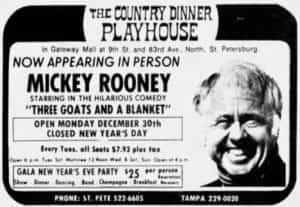 Rooney’s show, Three Goats and a Blanket (1974), was the only one in Tong’s memory that arrived as a “package,” with star, director, cast and set, with no input at all from the Country Dinner Playhouse.
Rooney’s show, Three Goats and a Blanket (1974), was the only one in Tong’s memory that arrived as a “package,” with star, director, cast and set, with no input at all from the Country Dinner Playhouse.
Then there was the time Sal Mineo, during his curtain call for The Tender Trap in August, 1975, began to break up furniture on the Country Dinner “thrust” stage, kicking it off the side of the raised platform and informing the audience how cheap it was.
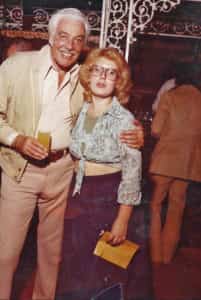
Cesar Romero and fan (the show was “Goodbye Tiger, Goodbye Fifi,” 1979)
“It was done tongue-in-cheek,” Mineo said the next day, explaining that he was protesting the collapse of a flimsy desk and chair during the performance (the furniture was subsequently bolted down, and the run continued).
That same month, Deborah Raffin’s acting at the Showboat (co-starring with Lyle Waggoner in Come Blow Your Horn) was panned by the Tampa Tribune. Critics at the Tribune, and at the rival St. Petersburg Times, didn’t seem to enjoy much of anything at either venue (an ongoing point of contention between the theaters and local media). This review was particularly harsh.
Raffin’s husband ran an ad in the paper offering a money-back guarantee to anyone who didn’t like the show. “In my opinion, (the critic) is guilty of incredibly bad judgement,” Michael Viner wrote. “I am willing to back up my belief with my own money and I ask you to be the judge.”
It was later reported that he had no takers.
Viner and Raffin spent $600 to treat 60 ambulatory patients at Bay Pines V.A. Hospital to a matinee of Come Blow Your Horn, stopping by the medical center to visit with patients who were unable to make the journey.
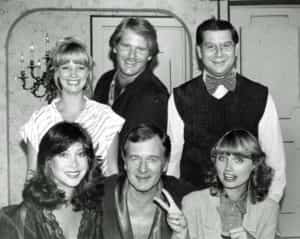
1980: Bill Dailey (from “The Bob Newhart Show” and “I Dream of Jeannie”) in “Lover’s Leap.” At bottom right is Arkansas actress Tess Harper, who was a member of the supporting cast.
The economic model for dinner theaters was simple: Name recognition brought out the customers, mostly elderly people who remembered the fading actors and actresses fondly. The added feature of a good meal – both the Showboat and Country Dinner Playhouse reportedly featured excellent, restaurant-quality food – equaled a package deal, a night on the town.
Star salaries were between $2,000 and $4,000 per week, with condominium accommodations.
 “You have a high fixed cost, low variable cost operation,” explains David Tong. “The show cost is fixed – it costs us no more to put on a show for 20 than 2,000 people. Most of the costs are fixed – the rent, the electric bill. The variables are the labor costs and the food costs.
“You have a high fixed cost, low variable cost operation,” explains David Tong. “The show cost is fixed – it costs us no more to put on a show for 20 than 2,000 people. Most of the costs are fixed – the rent, the electric bill. The variables are the labor costs and the food costs.
“My dad had it down to how many cents could be allocated for these items. We tried to bring in a show for two to three dollars per person on the food cost. So we were able to have a low-variable break even. If we could sell a ticket for at least $4, we would have some money toward paying all the variable cost, plus a little more to put towards the fixed cost.
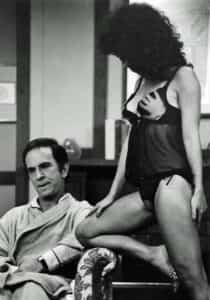
Don Adams and his then-wife, Judy Luciano (niece of mobster Lucky Luciano), in “The Owl and the Pussycat” (1980).
“That’s the thing most people didn’t seem to get – you had to keep the place packed. So sometimes if the numbers were sagging, we would put out $5.95 specials for matinees.”
Al Tong treated it like the business that it was – you had to work at it to keep it healthy. “It’s sort of like shooting craps,” he once said. “If it works, it works. If not, we won’t cry about it.”
If a Showboat show wasn’t packing ‘em in, remembers Dow Sherwood’s grandson John, “at the Village Inn he’d just hand out free passes to the Showboat so that they could get the alcohol sales.
“He was a character, a big flirt, and he loved telling jokes. He loved his customers.”
Sherwood was not yet in his teens when he got invested in the family business. “I grew up going there as a kid pretty much every night with my grandparents, during the summer,” he explains. “If we didn’t have some kind of activity going on, we were drug to the Showboat – because that’s where they went.”
For both venues, summers were the toughest, when the snowbirds were gone. Those star salaries were stretched thin.
The longer a show ran, the more cost-efficient it was. The escalation of musicals, produced with local, professional talent and without “name” stars, bore this out. It was a survival maneuver, and it worked.
The Sound of Music ran for eight months at the Showboat; the Country Dinner Playhouse had a 26-week run of The Best Little Whorehouse in Texas.
“I liked the concept of you have a show, you have a cast and you’re just rolling with it,” David Tong says. “It’s expensive to build sets and do all this other stuff. It’s expensive to re-do things. So when we had a winner, we just rolled with it.”
The musicals proved to be a popular exception to the “star” rule, and titles such as Hello Dolly, Can-Can, South Pacific, Man of La Mancha and Oklahoma! became “training grounds” for bay area triple-threats.
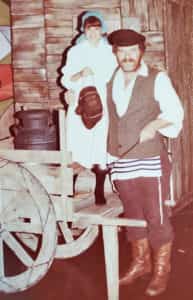
Michael O. Smith in “Fiddler on the Roof,” 1981 (his 10-year-old daughter Angela was also in the cast).
“When dinner theaters discovered musicals, it changed things,” says Michael O. Smith, who starred as Tevye in Fiddler on the Roof in 1977 and ’81. “The musicals just took off like wildfire.”

Ann Hodges and Doug Easley in “The Best Little Whorehouse in Texas,” 1984.
Smith was one of the longtime leading lights on bay area dinner theater stages, along with Ann Hodges, who passed away in September 2020.
The dinner theaters are gone now, too, faded away like so many of the stars’ careers. What remains are the memories, along with stacks of autographed programs, a few crumbling photos – and lots of stories to tell the grandchildren.
It was the mid 1980s, David Tong believes, when the writing began to appear on the wall.
“The discretionary entertainment dollar that was going to these theaters went somewhere else,” he says. “In large part, it went to professional sports teams in the Tampa Bay area. It was new, it was exciting, it was different. There was nothing we could do about it, and we knew it.”
There were other changes: The bay area’s population was changing from predominantly elderly people, more likely to spend their dollars on good, old-fashioned entertainment, to a younger demographic that didn’t give a darn about “dinner and a show” and its lengthy time commitment.
Adds Tong: “Keep in mind that in 1975, cable TV didn’t exist in Pinellas County. When I was in law school at Stetson in 1982, there was no cable TV available anywhere around.
“And then more and more entertainment options appeared – Ruth Eckerd Hall opened, highly subsidized by the city, and we had to compete against it. The same with the Bayfront and Mahaffey – people started bringing national tours in.” And “stars” did not do national tours.
Dow Sherwood died in 1987, and the Showboat soldiered on under the leadership of his daughter Virginia, who sold the business in 1992 (the new owners failed, and sold it again two years later). The “riverboat” building was bulldozed, and no trace of it remains today.
In 1988, Al Tong sold the Country Dinner Playhouse, and it, too, was history by the early 1990s.

Bob Denver with David Tong, 1977. The “Gilligan’s Island” star was in “Play it Again Sam” at the Tong family’s Country Dinner Playhouse. Denver met his wife-to-be, actress Dreama Perry, during this production. They remained married until Denver’s death in 2005.
Dinner theater continues to be a viable entertainment option across the United States although very few, if any, venues employ and market celebrities any more, according to the National Dinner Theatre Association.
In Jacksonville, the Alhambra, which opened the same year as Dow Sherwood’s Showboat, refers to itself as the nation’s oldest continuously operating dinner theater.
St. Petersburg’s Golden Apple (circa 1980s), which later became the Encore and outlived the Showboat and the Country Dinner Playhouse, is long gone.
“At one time, the Showboat was listed as one of the top five dinner theaters in the country,” recalls Jimmy Ferraro. “And that’s when dinner theater was really at its height. And they were all over the country. Now, you can count them on both hands.”
Comparison shopping
Here’s a look at the same three-year period, 1974-76, at the Showboat Dinner Theatre and the Country Dinner Playhouse. Shows generally ran for five or six weeks; if attendance warranted, contracts would be re-negotiated and the shows held over. Where would you have gone?
Showboat Dinner Theatre 1974
Pat O’Brian in Daddy, Dear Daddy (Jan)
Bob Crane in Beginner’s Luck (Feb)
Dana Andrews in Best of Friends (April)
Jackie Coogan in Mr. and Mrs. (June)
George Hamilton in 6 Rms Riv Vu (Aug)
Van Johnson in Help Stamp Out Marriage (Aug/Sept)
June Allyson in My Daughter, Your Son (Sept)
Eve Arden in Under Papa’s Picture (Nov)
Gig Young in Harvey (Dec)
Country Dinner Playhouse 1974
Sal Mineo in Sunday in New York (Jan)
Yvonne De Carlo in Nina (March)
Mamie Van Doren in Will Success Spoil Rock Hunter (April/May)
Andy Devine in What Did We Do Wrong (May)
James Drury in The Prisoner of Second Avenue (May/June)
Sheila McRae in Luv (June)
Richard Egan in No Hard Feelings (July)
Sue Ann Langdon in The Owl and the Pussycat (Aug/Sept)
Love Doctor (no star) (Sept)
Ann B. Davis in Three on a Honeymoon (Nov)
Eddie Bracken in Don’t Drink the Water (Nov/Dec)
Mickey Rooney in Three Goats and a Blanket (Dec)
Showboat Dinner Theatre 1975
Dorothy Lamour in Fallen Angels (Jan)
Cesar Romero in My Three Angels (March)
Gene Barry in the Girl in the Freudian Slip (April)
Bob Crane in Beginner’s Luck (May)
Tab Hunter in Here Lies Jeremy Troy (June)
Lyle Wagonner/Deborah Raffin in Come Blow Your Horn (Aug)
Hans Conried in The Sunshine Boys (Sept)
Shelley Berman in Don’t Drink the Water (Oct)
Ray Walston in You Know I Can’t Hear You When the Water’s Running (Nov)
Rosemary Prinz in Peterpat (Dec)
Country Dinner Playhouse 1975
Maureen O’Sullivan in No Sex Please, We’re British (Jan)
Peter Breck in Accommodations (Feb)
Sheila MacRae in Last of the Red Hot Lovers (April)
Gavin MacLeod in The Seven Year Itch (May)
Nancy Kulp in Busybody (June)
Dawn Wells in Bell, Book & Candle (July)
Sal Mineo in The Tender Trap (Aug)
Peter Lupus in Agatha Sue, I Love You (Sept)
Dwayne Hickman in Natalie Needs a Nightie (Oct)
Jesse White in Norman is That You? (Nov)
Showboat Dinner Theatre 1976
Bob Cummings in The Marriage-Go-Round (Jan)
Virginia Mayo in Move Over Mrs. Markham (March)
Mark Miller in Ginger in the Morning (April/May)
Kaye Ballard in The Desk Set (May/June)
Cyd Charisse in Murder Among Friends (July/Aug)
Peter Palmer/Aniko Farrell in Oklahoma! (Sept/Oct)
Louis Nye in Hallelujah Holiday! (Nov)
Country Dinner Playhouse 1976
Anthony George in Any Wednesday (Jan)
Imogene Coca/King Donovan in Plaza Suite (Feb)
Don Ameche in Once More With Feeling (March)
Bill Daily in A Gentleman and a Scoundrel (April/May)
Sheila MacRae in Lovers and Other Strangers (June)
James Drury in The Rainmaker (July)
Tommy Sands in Mister Roberts (Sept)
Fiddler on the Roof (October through January)
This story appears in Vintage St. Pete Volume II: Legends, Locations, Lifestyles, from St. Petersburg Press.


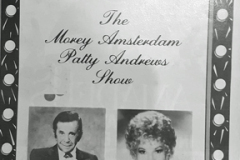
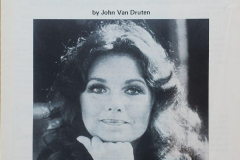
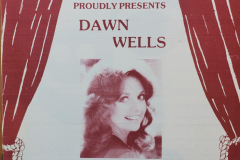
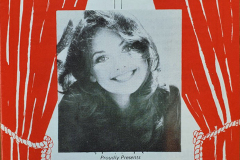
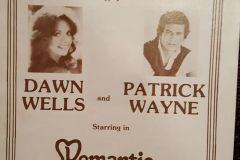
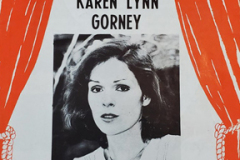
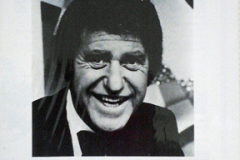
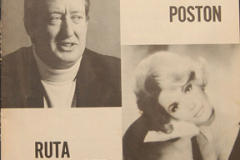
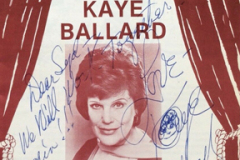
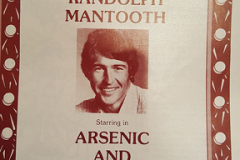
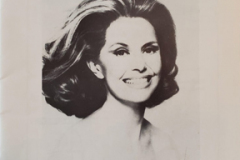
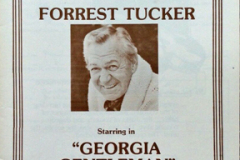
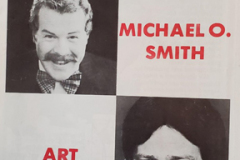
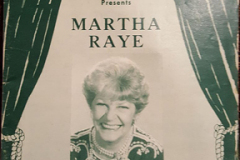
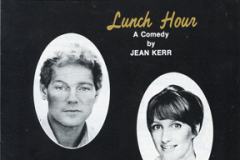
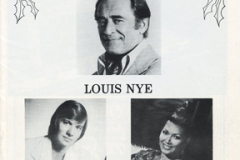
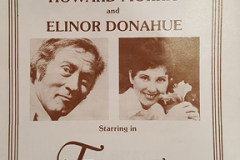
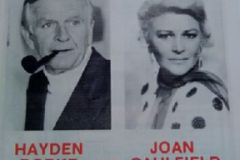
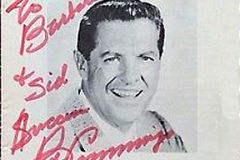
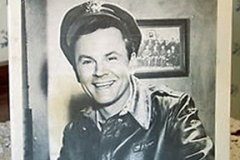
Rose Hayes
September 14, 2021at8:57 am
Lord, do I miss Dinner Theater. I miss ‘Supper Clubs’ also. A nice meal and a show or a ni e meal and dancing. Where did they go??
Cheryl Horne
September 12, 2021at12:07 pm
I shared the stage with so many of these same stars, in different plays, in different states, and was privileged to work for a second time with Dawn Wells in her last stage appearance, at the Alhambra in 2017. Loved this article!